
Tina
There are an estimated 136,000 people living on conditions of modern slavery in the United Kingdom (Global Slavery Index 2018). According to the 2017 annual figures provided by the National Crime Agency, 5, 145 potential victims of modern slavery were referred through the National Referral Mechanism in 2017, of whom 2,454 were female, 2688 were male and 3 were transgender, with 41% of all referrals being children at the time of exploitation. People are subjected to slavery in the UK in the form of domestic servitude, labour exploitation, organ harvesting and sexual exploitation, with the largest number of potential victims originating from Albania, China, Vietnam and Nigeria. This data however does not consider the unknown numbers of victims that are not reported. Tina is from India but travelled to the UK where she was forced to marry a man she did not know. She was abused by both him and his family. She became pregnant and worried for her child. She escaped from her abusers and was referred to Black Country Women's Aid who supported her in their refuge. There she lived alongside other women and children who had escaped abuse.
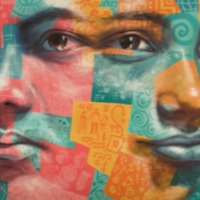
S.
There are an estimated 20,000 people living in conditions of modern slavery in Albania (GSI 2018). An estimated 10% of girls in Albania are married before their eighteenth birthday, with child marriage most common among the Roma ethnic group and in poor, isolated and rural areas. Child marriage is driven by gender inequality and while country has committed to eliminate child, early and forced marriage by 2030 in line with target 5.3 of the UN Sustainable development goals, no progress has been reported thus far. Human traffickers also exploit domestic and foreign victims in Albania, and traffickers exploit victims from Albania abroad. Traffickers exploit Albanian women and children in sex trafficking and forced labor within the country, especially during tourist season. Traffickers use false promises such as marriage or employment offers to force victims into sex trafficking. Traffickers exploit Albanian victims in sex trafficking in countries across Europe, particularly Kosovo, Greece, Italy, Belgium, Germany, Switzerland, North Macedonia, Norway, the Netherlands, and the UK. Albanian migrants who seek employment in Western Europe face forced labor and forced criminality, particularly in the UK. S was born in Albania to a poor family who forced her to marry someone living in Greece at the age of 14. S moved to Greece with her husband illegally, subjected to emotional and physical abuse daily. After a year, S escaped her marriage and was deported back to Albania, however after giving birth to her daughter, Sara, S’s father forced her into another marriage with a 60-year-old man. S escaped this second forced marriage with the help of her father’s friend she had known since she was ten years old. This man, however, attempted to traffik S into prostitution in Italy. She was caught by police on a boat and referred to a safe place back in Albania.
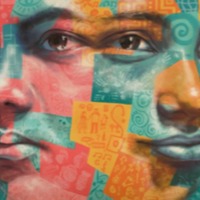
Fumi
There are an estimated 136,000 people living on conditions of modern slavery un the United Kingdom (Global Slavery Index 2018). According to the 2017 annual figures provided by the National Crime Agency, 5, 145 potential victims of modern slavery were referred through the National Referral Mechanism in 2017, of whom 2,454 were female, 2688 were male and 3 were transgender, with 41% of all referrals being children at the time of exploitation. People are subjected to slavery in the UK in the form of domestic servitude, labour exploitation, organ harvesting and sexual exploitation, with the largest number of potential victims originating from Albania, China, Vietnam and Nigeria. This data however does not consider the unknown numbers of victims that are not reported. Fumi grew up in West Africa. She went to university and studied to be a teacher. She fell in love and got married at a young age, but the man turned out to be violent and abusive. He eventually beat her so badly that she spent three days in hospital. After this experience, Fumi decided to go to the UK to start a new life as a teacher. Unable to get a visa, her mother paid a lot of money for Fumi to travel on a fake passport. However, the men who arranged her travel were traffickers, and upon arrival in the UK she was forced to work in a brothel. She was trapped there for four months.
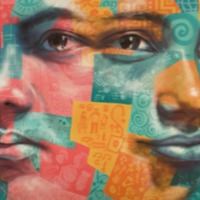
Jamie B
There are an estimated 403,000 people living in conditions of modern slavery in the United States (GSI 2018). Among this number, are children subjected to forced marriage. A study published on child marriage in 2011 determined that the prevalence of child marriage among women in the US was 8.9 percent, meaning that over 9.4 million US women were married at age 16 or younger. Forced marriage and child marriage are understudied problems within the United States and more research is needed to determine what drives its occurrence. Jamie was forced in to an arranged marriage when she was 19, to a man who beat and raped her and abused their children.
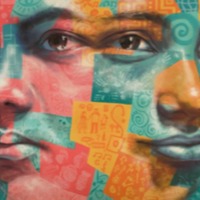
Crystal B
The UK National Crime Agency estimates 3,309 potential victims of human trafficking came into contact with the State or an NGO in 2014. The latest government statistics derived from the UK National Referral Mechanism in 2014 reveal 2,340 potential victims of trafficking from 96 countries of origin, of whom 61 percent were female and 29 percent were children. Of those identified through the NRM, the majority were adults classified as victims of sexual exploitation followed by adults exploited in the domestic service sector and other types of labour exploitation. The largest proportion of victims was from Albania, followed by Nigeria, Vietnam, Romania and Slovakia. Crystal was trafficked to the UK from Trinidad into a situation of domestic servitude leaving four children in the West Indies. She endured an abusive marriage and was vulnerable to coercion and grooming. Crystal was trafficked for four years, sold to three families and worked at least 18 hours-a-day.

Arien
Sex trafficking is a form of modern slavery that exists throughout the United States. Traffickers use violence, threats, lies, debt bondage and other forms of coercion to compel adults and children to engage in commercial sex acts against their will. The situations that sex trafficking victims face vary, many victims become romantically involved with someone who then forces them into prostitution. Others are lured with false promises of a job, and some are forced to sell sex by members of their own families. Victims of sex trafficking include both foreign nationals and US citizens, with women making up the majority of those trafficked for the purposes of commercial sexual exploitation. In 2015, the most reported venues/industries for sex trafficking included commercial-front brothels, hotel/motel-based trafficking, online advertisements with unknown locations, residential brothels, and street-based sex trafficking. Arien was feeling alone when she met a man who made her feel like he was there for her. After building up her trust this man began to abuse Arien and forced her into commercial sexual exploitation. Taken across the United States by her trafficker and subjected daily to physical and sexual abuse, Arien was finally able to escape one night while her trafficker was sleeping.
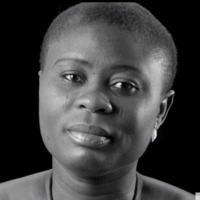
Bukola
There are an estimated 57,700 people in modern slavery in the US according to GSI estimates. The US attracts migrants and refugees who are particularly at risk of vulnerability to human trafficking. Trafficking victims often responding to fraudulent offers of employment in the US migrate willingly and are subsequently subjected to conditions of involuntary servitude in industries such as forced labour and commercial sexual exploitation. Bukola was trafficked by her husband who promised her a better life and loving relationship in the US. Bukola’s husband withheld food and prevented her from leaving the house, forcing her to work braiding hair in their home and taking the money for himself. It was after reaching out to a public health nurse that Bukola was able to escape to a shelter, where she stayed for 8 months with her son and was referred to a support group for immigrant women and refugees.
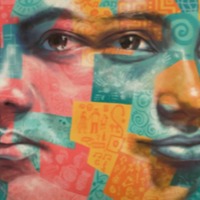
Kaew
Kaew entered Japan on a tourist visa in May 1992 at the age of 31, after meeting an agent in Bangkok. She was kept in a “snack bar,” or brothel, in Nagano prefecture, west of Tokyo. Of the estimated 600,000 to 800,000 individuals trafficked across international borders each year, some 80 percent are women and girls. Kaew was one of the thousands of women trafficked annually out of Thailand for sexual exploitation. The major destinations include Japan, Malaysia, Bahrain, Australia, Singapore, and the US. Internal trafficking occurs within the country as well, usually from northern Thailand (where hill tribe women and girls are denied Thai citizenship). In Japan, where she was enslaved, women are trafficked from Thailand, the Philippines, Russia, and Eastern Europe, and on a smaller scale from Colombia, Brazil, Mexico, Burma, and Indonesia.
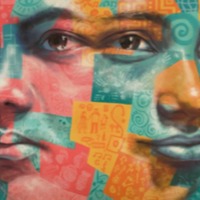
Giselle
In the Philippines, where three major insurgent groups have fought the Philippine military since the 1960s, there are an estimated 2000 child soldiers. The Communist-oriented New People’s Army, established in 1968, began an intense recruitment of children in the 1990s. By 2000, some 25 percent of new recruits were children, and more than ten percent of its regular combatants are now under 18. Parents volunteer children to serve as combatants and camp guards. The Moro Islamic Liberation Front allows the training of children as young as 12. Parents volunteer their children, seeing it as an observation of Islamic teaching, and Muslim youth organizations recruit students from schools and colleges. The Abu Sayyaf (“Bearer of the Sword”), a Muslim separatist group which appeared in the late 1980s, uses Islamic religion to draw minors into the movement, for use as combatants, human shields, and hostages.Giselle became a child soldier in the Philippines at the age of 15.